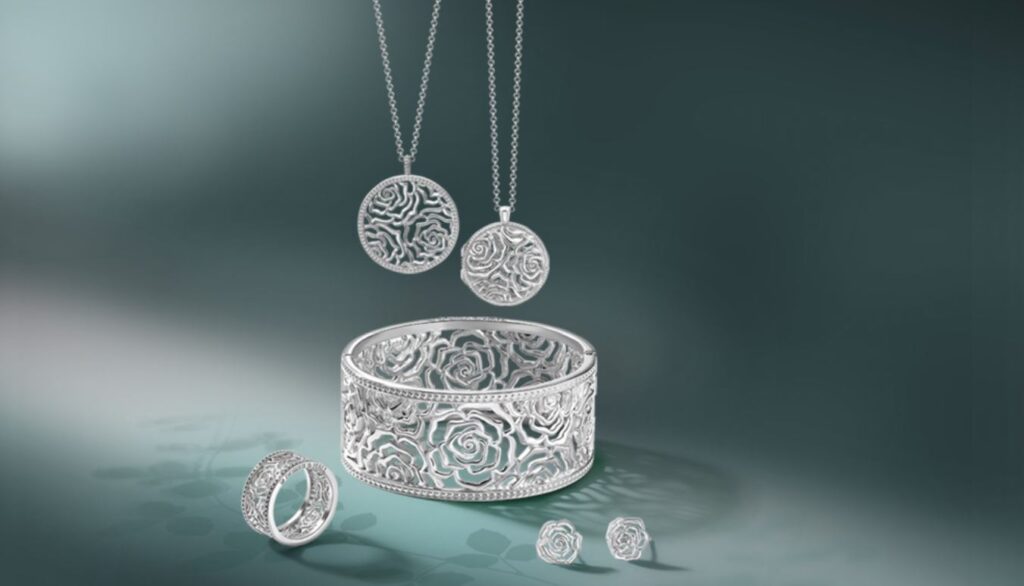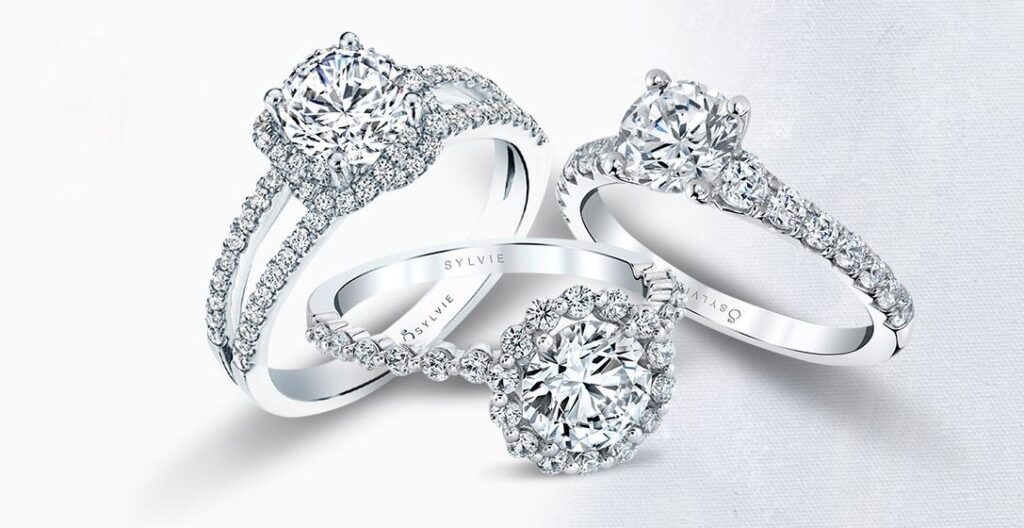Argentium Silver vs White Gold
When it comes to selecting the perfect metal for your jewelry, two popular options often come to mind: Argentium Silver and White Gold. Both metals have their unique properties and benefits, making the choice between them a matter of personal preference and specific needs. This article delves into a detailed comparison of Argentium Silver and White Gold, exploring their composition, durability, maintenance, cost, and more to help you make an informed decision.
What is Argentium Silver?
Argentium Silver is a modern type of sterling silver, known for its improved properties and ease of maintenance. It was developed in the 1990s by Peter Johns at Middlesex University, Argentium Silver is a patented alloy that offers numerous advantages over traditional sterling silver.
Composition and Properties
Argentium Silver typically contains a higher percentage of pure silver (93.5% to 96%) compared to traditional sterling silver (92.5%). The key differentiator is the addition of germanium, which enhances the metal’s properties. Germanium forms a protective oxide layer on the surface of the silver, providing superior tarnish resistance and durability. Tarnishing is a process in which silver forms a black chemical over its surface due to sulfur compounds in air.
Argentium silver is currently made in three compositions given below.
935 Argentium silver: 93.5% silver, 6.5% copper and germanium
940 Argentium silver: 94% silver, 6% copper and germanium
960 Argentium silver: 96% silver, 4% copper and germanium
Benefits of Argentium Silver
- Tarnish Resistance: One of the most significant benefits of Argentium Silver is its resistance to tarnish. The addition of germanium helps prevent oxidation, keeping the silver looking pristine for longer periods.
- Durability: Argentium Silver is harder and more durable than traditional sterling silver, making it suitable for everyday wear.
- Hypoallergenic: With fewer impurities and no nickel content, Argentium Silver and gold plated silver are an excellent choice for individuals with metal allergies.
- Low Maintenance: The reduced need for polishing and cleaning makes Argentium Silver a convenient option for those who prefer low-maintenance jewelry.
- Recyclability: Argentium Silver is fully recyclable, contributing to its appeal for environmentally conscious consumers.

What is White Gold?
White Gold is a popular alloy of gold being used in jewelry making for its elegant appearance and versatility. It was developed in the 19th century as an affordable alternative to platinum and other expensive white metals. White Gold gained popularity in the early 20th century and has since become a staple in fine jewelry.
Composition and Properties
White Gold is an alloy made by combining pure gold with white metals such as palladium, nickel, or silver. The exact composition can vary, but it typically contains around 75% gold (18k) or 58.3% gold (14k). The addition of these metals gives White Gold its characteristic silvery-white appearance. To enhance its luster, White Gold is often plated with rhodium, a precious metal that adds a reflective finish.
Similar to argentium silver, white gold is also available is several compositions including.
- Nickel White Gold
- Platinum White Gold
- Palladium White Gold
Benefits of White Gold
- Aesthetic Appeal: White Gold has a timeless, elegant look that complements a wide range of gemstones and designs.
- Durability: The alloyed metals in White Gold enhance its strength and durability, making it suitable for intricate jewelry pieces.
- Versatility: White Gold’s neutral color makes it a versatile choice that pairs well with both traditional and contemporary designs.
- Hypoallergenic Options: While some White Gold alloys contain nickel, which can cause allergies, there are nickel-free options available for those with sensitive skin.
- Value Retention: White Gold retains its value well, making it a good investment for fine jewelry.

Sterling Silver vs White Gold
White gold is a better option compared to sterling silver. It has a premium gold looks with non-tarnishing properties. If you have a budget of white gold, then buy it. Sterling silver has equal white looks but it can tarnish and can be non-hypoallergenic.
10k White Gold vs Sterling Silver
10k white gold is a good option as it does not tarnish and will never react with skin. Sterling silver can tarnish and react with skin to turn it green.
Comparing Argentium Silver vs White Gold
Appearance and Aesthetic Differences
Argentium Silver has a bright, white shine that is often compared to platinum. Its natural tarnish resistance ensures that it maintains its luster over time. White Gold, on the other hand, has a slightly warmer hue due to its gold content. The rhodium plating gives it a brilliant, reflective finish, but it may require re-plating over time to maintain its appearance.
Durability and Hardness
Both Argentium Silver and White Gold are durable metals, but they have different characteristics. Argentium Silver is harder than traditional sterling silver, making it more resistant to scratches and dents. However, White Gold, especially in its 18k form, is generally harder and more durable than Argentium Silver due to the presence of stronger alloying metals.
Tarnish and Corrosion Resistance
Argentium Silver is renowned for its exceptional tarnish resistance, thanks to the addition of germanium. Without this property of tarnish resistance, silver will start forming patina. This makes it a low-maintenance option for those who prefer a bright, white metal that requires minimal upkeep. White Gold, while resistant to tarnish, can lose its rhodium plating over time, necessitating periodic re-plating to maintain its shine.

Maintenance and Care
Argentium Silver’s tarnish resistance means it requires less frequent cleaning and polishing compared to traditional sterling silver. A simple wipe with a soft cloth is often enough to keep it looking its best. White Gold, while durable, may need occasional re-plating with rhodium to maintain its bright, reflective finish. Both metals should be stored separately to avoid scratches and should be cleaned with appropriate jewelry cleaners.
Hypoallergenic Properties
Argentium Silver is an excellent choice for those with metal allergies, as it is free from nickel and other common allergens. White Gold can be hypoallergenic, but it’s essential to choose nickel-free alloys if you have sensitive skin. Alloys with palladium or platinum are good alternatives for hypoallergenic White Gold.
Price and Value
Argentium Silver is generally more affordable than White Gold, making it an attractive option for budget-conscious consumers. White Gold, being made from gold, is more expensive and retains its value well, making it a good investment for fine jewelry. The choice between the two will depend on your budget and long-term value considerations.
Gold’s elegance and durability make it a favorite for engagement rings, wedding bands, and other fine jewelry.
Uses in Jewelry
Both Argentium Silver and White Gold are used in a wide range of jewelry pieces, including rings, earrings, necklaces, bracelets, and anklets. Argentium Silver’s affordability and low maintenance make it popular for everyday wear and casual pieces. White Gold’s elegance and durability make it a favorite for engagement rings, wedding bands, and other fine jewelry.
Suitability for Different Types of Jewelry
Argentium Silver is ideal for intricate designs and pieces that require a bright, white metal with minimal upkeep. It’s also a great choice for statement pieces and fashion jewelry. White Gold, with its strength and luxurious appeal, is perfect for high-end pieces, including engagement rings, wedding bands, and heirloom jewelry. Its versatility makes it suitable for both modern and vintage-inspired designs.

Popularity and Market Trends
White Gold has long been a favorite in the jewelry market, particularly for bridal jewelry. Its classic, timeless appeal ensures its continued popularity. Argentium Silver, while newer, is gaining traction due to its superior properties and environmental benefits. Consumers are increasingly drawn to Argentium Silver for its tarnish resistance and hypoallergenic qualities.
Consumer Reviews and Feedback
Customer reviews for Argentium Silver often highlight its low maintenance and lasting shine. Many appreciate its affordability and environmental benefits. White Gold receives praise for its luxurious appearance and durability. Some consumers note the need for occasional rhodium re-plating but consider it a minor inconvenience given the metal’s overall benefits.
Common FAQ’s about Argentium Silver vs White Gold
Here are some FAQ’s about silver vs white gold.
What should you buy? Silver or White Gold
White gold is a better option than silver if you have budget. White gold does not tarnish and has a good appearance with premium feeling of gold.
What should you buy? Argentium Silver vs Sterling Silver
Argentium silver is a better choice between aregntium silver vs sterling silver. It comes with white appearance and does not tarnish.
Conclusion
In the debate between Argentium Silver and White Gold, the best choice depends on individual preferences, budget, and values. Argentium Silver offers excellent tarnish resistance, affordability, and eco-friendliness, making it a great choice for those seeking a low-maintenance, hypoallergenic metal.
White Gold, with its timeless appeal, durability, and value retention, is ideal for fine jewelry and significant pieces like engagement rings. Ultimately, both metals have their unique advantages, and the decision should reflect your personal style, lifestyle, and priorities.

